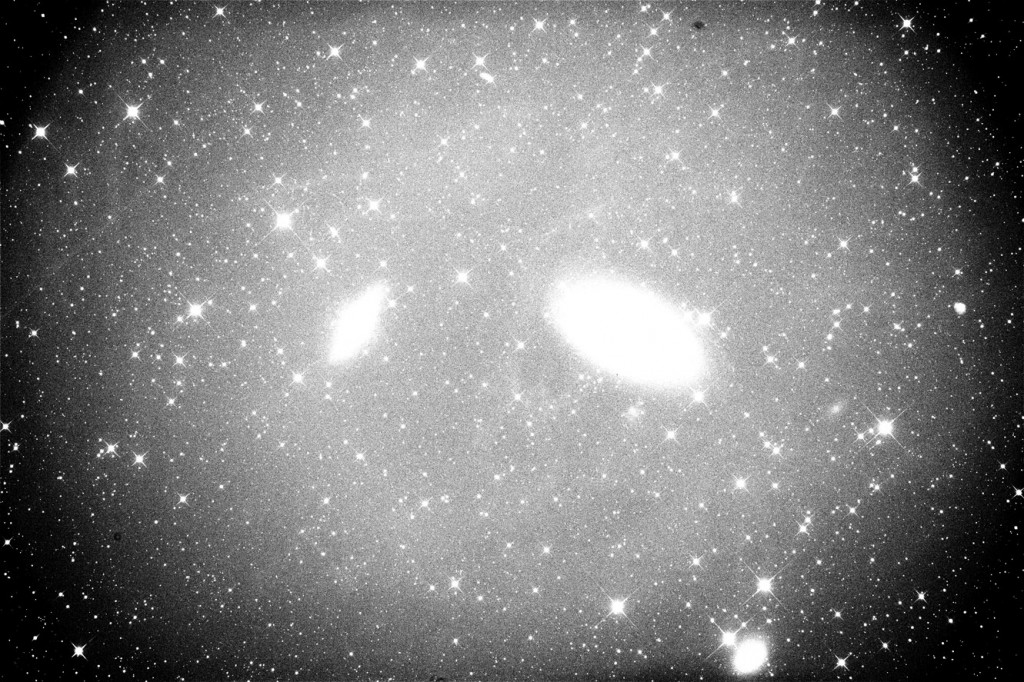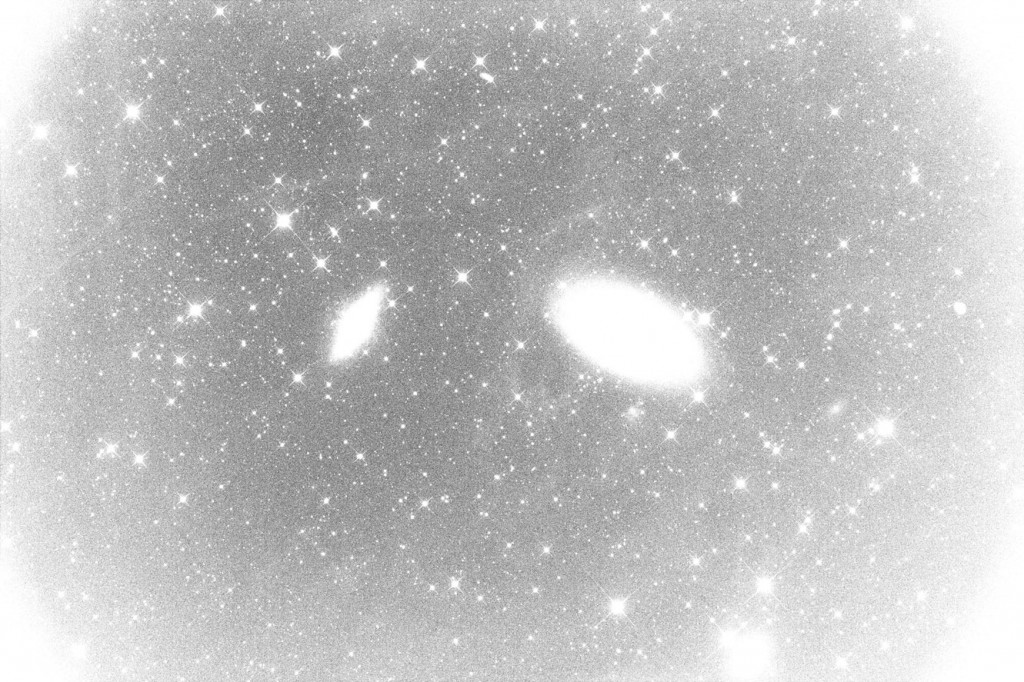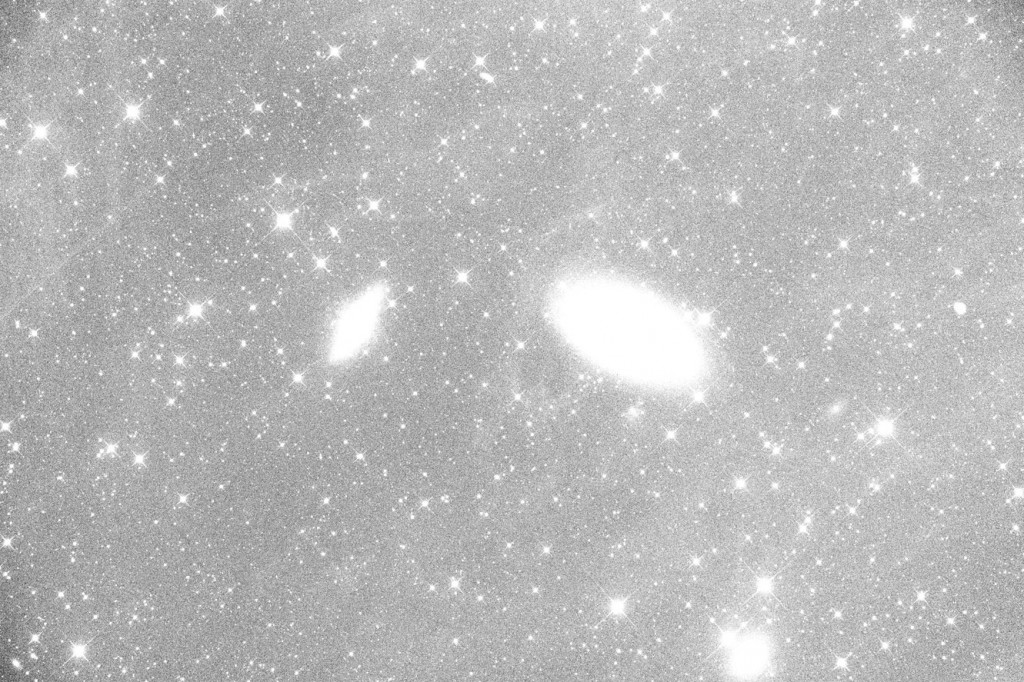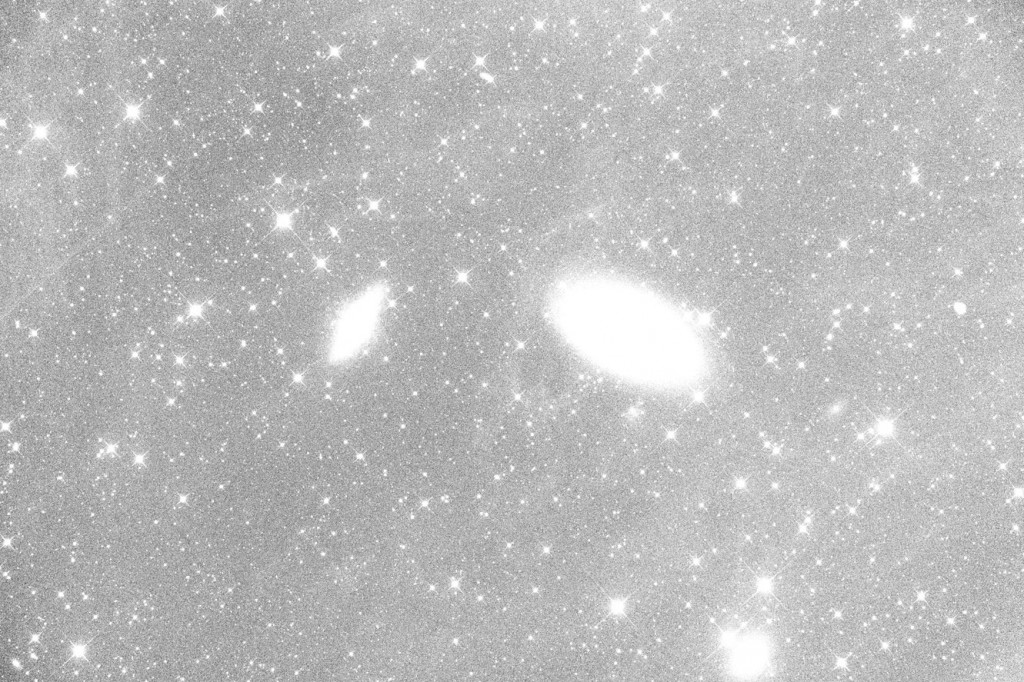This is just a quick-look example to show how important it is to perfectly well calibrate your flat fields with either master bias (for really short flat field subs taken with interline readout Kodak chips and cameras with electronical shutter only!) or master dark or a combination of master bias and master dark when some kind of optimization (scaling) is used in the calibration process (typically when you do not have a proper length master dark for your individual flat field subs).
Calibration with just a master dark (without a flat field) is a „no-go“ for large CCD chips even with a high-end astrograph having small amount of vignetting.
Calibration with just a master flat field (no darks at all) is also a „no-go“ due to over/under correction of vignetting for our case (Kodak, large surface chip).
Calibration with both master flat and master dark is „almost-a-go“ in case when you do not calibrate your individual flat field subs. In such a case you may again face some minor over/under correction of vignetting.
The correct approach for Kodak, large format chips, is to perfectly calibrate your individual flat field subs with proper length (and temperature) master dark frame (or a combination of master bias and master dark at the same temperature and binning as the light frame subs were taken at when scaling/optimizing techniques are used in order to create a matching master dark).
It is normal to see some amount of slight gradient in the images (even in narrow band, namely in the OIII channel) while part of it comes from the real, in some way „polluted“, night sky and some of it might be introduced by a not perfect master flat (which becomes a real problem with faster F-stop systems like below F/4). Flat field calibration is a tough „magic“ even for experienced astroimagers… ![]()
BTW again, I’d like to emphasize that this approach master dark + flat dark calibration of your individual light frame subs is essential for all Kodak chips and for OSC (Color) versions of Sony chips (to get rid of electroluminiscence and to fix bad pixels in the individual pixels of Bayer matrix). But that’s another story…




